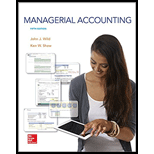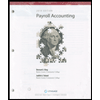
Concept explainers
Harmon’s has several departments that occupy all floors of a two-story building that includes a basement floor. Harmon rented this building under a long-term lease negotiated when rental rates were low. The departmental accounting system has a single account, Building Occupancy Cost, in its ledger. The types and amounts of occupancy costs recorded in this account for the current period follow.

The building has 7,500 square feet on each of the upper two floors but only 5,000 square feet in the basement. In prior periods, the
20,000 square feet to find an average cost of $23.25 per square foot and then charged each department a building occupancy cost equal to this rate times the number of square feet that it occupies.
Jordan Style manages a department that occupies 2,000 square feet of basement floor space. In discussing the departmental reports with other managers, she questions whether using the same rate per square for all departments makes sense different floor space has different values. Style checked a recent real estate report of average local rental costs for similar space that shows first-floor space worth $40 per square foot, second-floor space worth $20 per square foot, and basement space worth $10 per square foot (excluding costs for lighting and Cleaning).
Required
1. Allocate occupancy costs to Style’s department using the current allocation method.
2. Allocate the building rent cost to Style’s department in proportion to the relative market value of the floor space. Allocate to Style’s department the lighting and cleaning costs in proportion to the square feet occupied (ignoring floor space market values). Then, compute the total occupancy cost allocated to Style’s department.
Analysis Component
3. Which allocation method would you prefer if you were a manager of a basement department?
Want to see the full answer?
Check out a sample textbook solution
Chapter 9 Solutions
MANAGERIAL ACCOUNTING FUND. W/CONNECT
- Please Provide Solution of this General Accounting Question with Correct Methodarrow_forwardWhich of the following accounts is closed at the end of the accounting period? A) RevenueB) DividendsC) ExpensesD) All of the aboveneedarrow_forwardWhich of the following accounts is closed at the end of the accounting period? A) RevenueB) DividendsC) ExpensesD) All of the abovearrow_forward
- I need help Which of the following is considered a non-operating activity? A) Sales revenueB) Interest expenseC) Salaries expenseD) Cost of goods soldarrow_forward13. What is the main purpose of preparing a cash flow statement? A) To show a company's profitabilityB) To show the movement of cash in and out of a companyC) To show the company's net incomeD) To show the total liabilities of the companyarrow_forwardWhich of the following is considered a non-operating activity? A) Sales revenueB) Interest expenseC) Salaries expenseD) Cost of goods soldhelparrow_forward
- Which of the following is considered a non-operating activity? A) Sales revenueB) Interest expenseC) Salaries expenseD) Cost of goods soldarrow_forward16. What is the primary difference between a trial balance and a balance sheet? A) Trial balance includes only liabilitiesB) Trial balance is prepared before financial statementsC) Trial balance includes only assetsD) Balance sheet is prepared daily, while trial balance is prepared monthly no aiarrow_forwardA company’s net income is $50,000, and its total assets are $200,000. What is the company’s return on assets (ROA)? A) 25%B) 20%C) 15%D) 10%arrow_forward
 Cornerstones of Cost Management (Cornerstones Ser...AccountingISBN:9781305970663Author:Don R. Hansen, Maryanne M. MowenPublisher:Cengage Learning
Cornerstones of Cost Management (Cornerstones Ser...AccountingISBN:9781305970663Author:Don R. Hansen, Maryanne M. MowenPublisher:Cengage Learning

